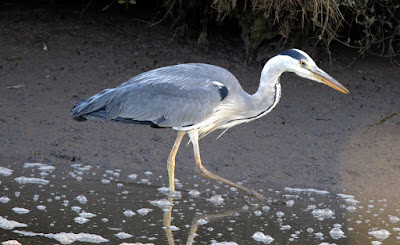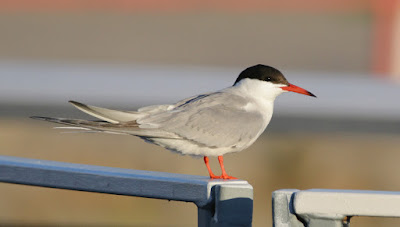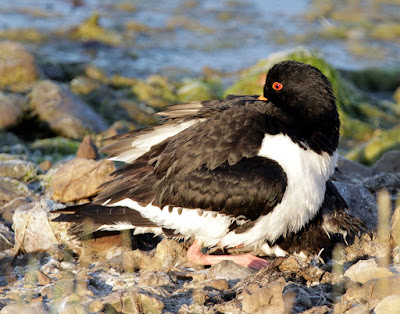I was on the way home after an uneventful morning when up popped a real rarity near Pilling. Not only was this bird a major rarity but there was also proof of breeding by way of an adult with several youngsters in tow. It is a species now so rare, so scarcely if ever seen in recent years in this part of Lancashire that I for one believed to be locally almost extinct.
"The Grey Partridge, a native game-bird has declined enormously and, despite years of research and the application of a government biodiversity action plan, the continuing decline shown by the Common Bird Census and Breeding Bird Survey suggests that all efforts to boost the population in the wider countryside have so far been unsuccessful. Grey Partridge is one of the most strongly decreasing bird species in Europe, with steep declines evident in all regions since 1980." BTO.
Grey Partridge
I grabbed a few pictures before the covey disappeared through a gateway and, over a rise in the ground and then into the next field. The picture shows how well grown the young ones are, so hopefully they will reach adulthood before long, despite this being an area where “sportsmen” abound. A Grey Partridge is a major trophy for birders and shooters alike although I know of shooters who profess not to take aim at Grey Partridges, even if they should see one.
Grey Partridge
Grey Partridge
Claims of Grey Partridge from the locally inexperienced may involve sightings of the numerous and non-native Red-legged Partridge, released for sport in their tens of thousands during the autumn and winter months of every year.
Apart from the partridge highlight things were pretty normal this morning. There were very good numbers of birds in the area of Conder Green and up to Cockersands via Moss Lane, Jeremy Lane and Slack Lane.
The dry and rain-free summer seems to be producing a good harvest of birds if not of famers’ crops.
Not least was a flock of 80/90 House Sparrows along Jeremy Lane where my arriving car caused a Barn Owl to vacate a fence post and disappear into the distance. But my stop produced a moulting Willow Warbler, hiding away in a hawthorn bush plus a Sedge Warbler and Reed Bunting.
Willow Warbler
Sedge Warbler
I suspect there may be a Swallow roost close to Moss Lane (maybe at the fishery) because quite early on I counted 100+, Swallows on the wires. An hour or so later there was just the resident few pairs of both Swallows and House Martins at Gardner’s Farm.
A good mix of species ensued along the ditches and hedgerows up to and including Slack Lane with 30+ Goldfinch, 10 Linnet, 10 Tree Sparrow, 8/10 Reed Bunting, 6+ Whitethroat, 5 Skylark, 4+ Sedge Warbler and even a Greenfinch or two. There was evidence of the first post-breeding movement of Meadow Pipits too with 10/12 in the fields here.
Meadow Pipit
Meadow Pipit
Goldfinch
Unfortunately the pool of Conder Green was not as busy as the lanes that radiate to and from the expanse of water. There was a brief Kingfisher and the usual mix of wildfowl and waders; 120 Redshank, 35 Lapwing, 20 Oystercatcher, 7 Little Grebe, 2 Little Egret, 2 Grey Heron.
That was it for the morning apart from a look at Gulf Lane and a check of the set-aside. Here was a flock of 12 Linnets, 2 Tree Sparrows and the warning calls of a Whitethroat from the clump of bramble. Whitethroats have been resident since May and definitely raised a family, maybe two by now.






























































.jpg)












